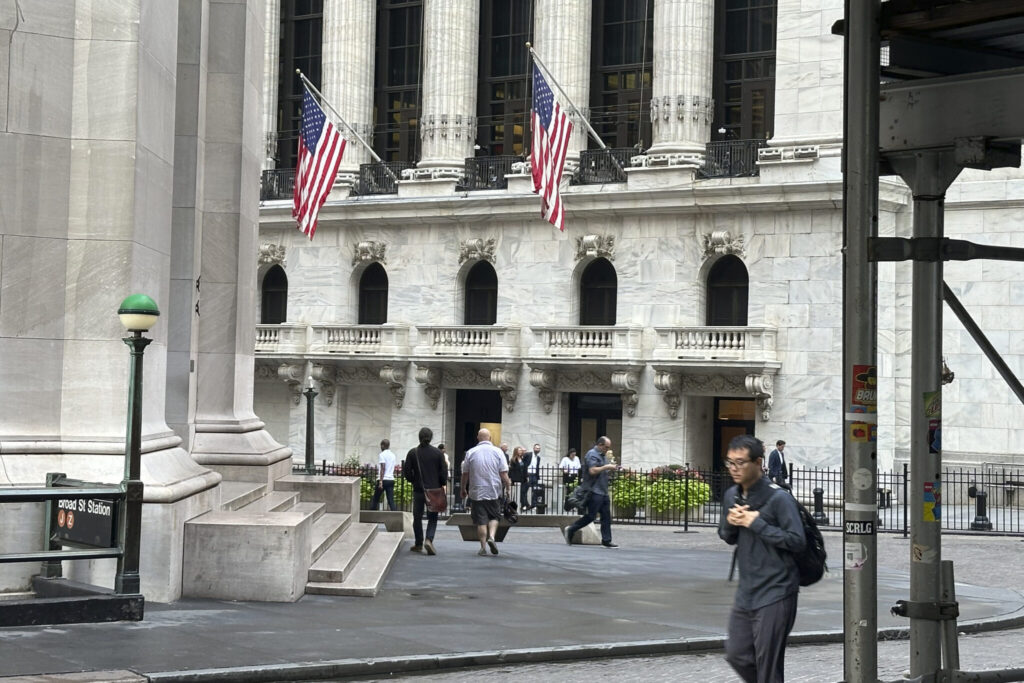U.S. stock indexes are holding relatively steady on Friday after a jobs report billed as the most important of the year came in mixed. The S&P 500 was 0.1% lower in early trading and still on track for its worst week since April. The Dow Jones Industrial Average was up 139 points, or 0.3%, and the Nasdaq composite was 0.5% lower. The action was stronger in the bond market, where short-term yields initially fell sharply after the jobs report showed U.S. employers hired fewer workers in August than economists expected. It’s the second straight month where hiring has come in below forecasts, adding to data showing weakness in manufacturing and some other areas of the economy.
Quick Read
- U.S. stock indexes held relatively steady on Friday after a mixed August jobs report, with the S&P 500 down 0.1%, the Dow Jones up 0.3%, and the Nasdaq down 0.5%.
- The report showed weaker-than-expected hiring for the second consecutive month, pushing some traders to increase forecasts for a potential Federal Reserve rate cut later in September.
- Despite the slower hiring, the unemployment rate improved to 4.2%, offering some optimism for the labor market.
- Bond yields initially fell after the report but recovered slightly, with the two-year Treasury yield at 3.73% and the 10-year yield inching up to 3.74%.
- Broadcom shares fell 9.4% despite positive quarterly earnings, while U.S. Steel rose 4.1% amid speculation of a potential acquisition by Cleveland Cliffs.
The Associated Press has the story:
Wall Street holds relatively steady after a big test, still headed for down week
Newslooks- NEW YORK (AP) —
U.S. stock indexes are holding relatively steady on Friday after a jobs report billed as the most important of the year came in mixed. The S&P 500 was 0.1% lower in early trading and still on track for its worst week since April. The Dow Jones Industrial Average was up 139 points, or 0.3%, and the Nasdaq composite was 0.5% lower. The action was stronger in the bond market, where short-term yields initially fell sharply after the jobs report showed U.S. employers hired fewer workers in August than economists expected. It’s the second straight month where hiring has come in below forecasts, adding to data showing weakness in manufacturing and some other areas of the economy.
The weaker-than-expected hiring pushed some traders to up their forecasts for how much the Federal Reserve will cut its main interest rate by at its meeting later this month, according to data from CME Group. Fed Chair Jerome Powell has already indicated it’s likely to cut rates for the first time since the 2020 COVID crash. The Fed wants to protect the job market and keep the economy from sliding into a recession after earlier hiking the federal funds rate to a two-decade high to stifle inflation.
Such cuts give a boost to investment prices, particularly if the Fed jumps beyond the traditional-sized move of a quarter of a percentage point. But the worry on Wall Street is that the slowing U.S. economy could fall into a recession. That could undercut corporate profits and erase any benefit from lower rates. “All is not well with the labor market,” said Brian Jacobsen, chief economist at Annex Wealth Management. “The Fed wanted the labor market to come into better balance, but any balancing act is unstable.”
Still, the jobs report included some more encouraging data points too. For one, the unemployment rate improved to 4.2% from 4.3% a month earlier. That was better than economists expected. And even if August’s hiring was weaker than expected, it was still better than July’s pace, points out Scott Wren, senior global market strategist at Wells Fargo Investment Institute. “Do not get hung up on whether” the Fed will cut by either a quarter or by an outsized half of a percentage point on Sept. 18, Wren said. “The important thing is the Fed is beginning a series of rate cuts.”
In the bond market, the two-year Treasury yield pared much of an early loss. It tends to closely track expectations for Fed action, and it had dropped as low as 3.65% immediately after the job report’s release before moving back to 3.73%. That’s down from 3.74% late Thursday. The 10-year Treasury yield, which moves more with expectations for longer-term economic growth and inflation, inched up to 3.74% from 3.73% late Thursday.
On Wall Street, Broadcom tumbled 9.4% despite reporting profit and revenue for the latest quarter that were above analysts’ forecasts, thanks in large part to the boom around artificial intelligence. The chip company said it expects to make $14 billion in revenue this quarter, which was slightly below analysts’ expectations of $14.11 billion, according to FactSet.
U.S. Steel rose 4.1% after the CEO of rival Cleveland Cliffs told MSNBC that his company would still be interested in acquiring U.S. Steel if the Biden Administration were to block its proposed sale to Japan’s Nippon Steel. Lourenco Goncalves also accused Nippon of frequent breaches of trade policies and cited national security issues if the proposed $14 billion Nippon-U.S. Steel were to go through. In stock markets abroad, indexes were mixed in Europe after dropping in much of Asia. Trading was halted in Hong Kong because of a typhoon.







